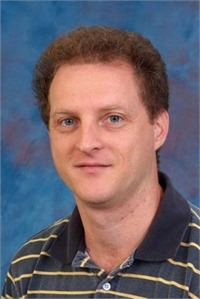Latest Past Events
Laser Communication with CubeSats
MIT Lincoln Lab 3 Forbes Road, LexingtonProf. Kerri Cahoy Massachusetts Institute of TechnologyCubeSats are nanosatellites that typically weigh less than 5 kg and are the size of a toaster oven, only with about 100 times less available power. CubeSat communications systems are typically RF, from 1200 baud FSK to >200 Mbps; higher rates are usually commercial CubeSats at higher frequencies and with more capable ground systems. Due to size, weight, and power (SWaP) limits and regulatory constraints, most CubeSats transmit at ~2 Watts with relatively low gain antennas. With the rapid growth in number of CubeSats on orbit, RF licensing for CubeSats has become a challenge. Free space optical (FSO) or laser communications (lasercom) systems have some performance advantages over RF and access to vast amounts of currently unregulated bandwidth. With demonstrated improvements in pointing capabilty, CubeSats in Low Earth Orbit (LEO) can now track a ground station telescope or track to crosslink to another CubeSat optical terminal, enabling FSO at hundreds of Mbps to Gbps while still supporting operation of instrument payloads. Low-cost, compact FSO terminals can support the vision of large constellations or swarms of CubeSat sensors (from hundreds to thousands of nodes) collecting terabytes or petabytes of remote sensing data daily (e.g. hyperspectral imagery, video). Lasercom downlinks and crosslinks within constellations and swarms can also enable exchanges of large volumes of data for autonomous onboard processing toward intelligent system planning and scheduling. We discuss the initial CubeSat FSO missions from research and industry, including MIT's Nanosatellite Optical Downlink Experiment and its corresponding Portable Telescope for Lasercom (PorTeL), MIT's CubeSat Lasercom Infrared CrosslinK mission (CLICK) with University of Florida's Miniature Optical Communications Transceiver (MOCT), and NASA’s Optical Communications and Sensor Demonstration (OCSD) CubeSats.Kerri L. Cahoy, Associate Professor of Aeronautics and Astronautics at MIT, received her B.S. (2000) in Electrical Engineering from Cornell University, and her M.S. (2002) and Ph.D. (2008) degrees in Electrical Engineering from Stanford University working with the Radio Science Team on Mars Global Surveyor. From 2006 to 2008, she was a Senior Payload and Communication Sciences Engineer at Space Systems Loral in Palo Alto, CA. From 2008 to 2010, Dr. Cahoy was a NASA Postdoctoral Program Fellow in Exoplanet Exploration at NASA Ames Research Center. From 2010 to 2011, she was a Radio Science research scientist on the MIT Gravity Recovery and Interior Laboratory (GRAIL) lunar mission team at NASA Goddard Space Flight Center. Prof. Cahoy currently holds the Rockwell International Career Development Chair.Registration is closed.
High-Resolution Retinal Imaging – Visualizing Cellular Structures In The Living Eye
MIT Lincoln Lab 3 Forbes Road, LexingtonDr. Mircea Mujat Physical Sciences Inc.Scanning laser ophthalmoscopy (SLO) and optical coherence tomography (OCT) provide information on cellular and sub-cellular structures in the living eye when enhanced with adaptive optics (AO) capabilities. AO enhances transverse resolution and confocal sectioning capabilities by detecting and correcting ocular aberrations in real-time and has become a valuable tool for vision researchers to explore the structural and functional aspects of vision and its disruption by disease. While AO has yet to fully transition from research lab to clinic, OCT is now a standard diagnostic procedure for glaucoma, macular holes, macula edema, retinal detachments, and other retinal pathologies. Simultaneous use of the two complementary imaging modalities provides a powerful comprehensive modality to investigate the eye. AO systems use a wave-front sensor to sense ocular aberrations that arise primarily from the cornea, crystalline lens, and tear film, and correct them using a deformable mirror in a closed-loop manner. AO has recently achieved success in a range of applications in ophthalmology in which the building blocks of retinal microstructures such as cone photoreceptors, rods, RPE cells, blood cells, and microvasculature need to be identified, counted, and mapped properly. In this presentation we will review the state-of-the-art capabilities in high-resolution retinal imaging. PSI designed, developed, and tested a number of compact platforms combining the power of AO with SLO or line-scanning technology (LSO), and OCT for human and animal eye imaging. Our compact, simplified research instruments can be used by ophthalmologists, optometrists, and vision scientists and will facilitate the introduction of this technology and the development of new techniques to detect and treat retinal diseases. Although AO-enhanced confocal SLO enables high-resolution imaging of the eye fundus, the capillaries are essentially transparent and, in standard, bright-field AO imaging can be difficult to visualize, except for the specular glint from blood cells coursing through them or the shadow they cast on deeper layers. Recently, it was shown that by using a larger, offset pinhole in the AO detection unit, images that capture multiply scattered light (as opposed to direct backscatter) can reveal the tiny retinal vasculature network of the human retina with unprecedented clarity. Offset aperture/split detector/quad simultaneous imaging modalities will also be presented as the most recent developments in high-resolution retinal imaging.Mircea Mujat obtained his Ph.D. in Optics in 2004 under the supervision of Prof. Aristide Dogariu at the School of Optics/CREOL, University of Central Florida. As a graduate student, he developed theoretical models and experimental techniques for polarimetric characterization of random electromagnetic fields, and for analyzing the signature of various random media. Between 2004 and 2007 Mircea joined Harvard Medical School and Wellman Center for Photomedicine - MGH as a Research Fellow, working with Prof. Johannes de Boer on ophthalmic investigations using OCT. He then joined the Biomedical Optics Group at PSI. His research interests at PSI are in ophthalmic imaging, medical instrumentation, adaptive optics, optical coherence tomography, and polarization imaging. Mircea is a member of the OSA, SPIE and ARVO.Registration is closed.
Metamaterial Advances For Radar And Communications (IEEE AESS Distinguished Lecture)
MIT Lincoln Lab 3 Forbes Road, LexingtonDr. Eli Brookner Raytheon Co. IEEE AESS Distinguished Lecture Co-sponsors IEEE Communications Society IEEE Electron Devices Society IEEE Aerospace & Electronic Systems Society IEEE Geoscience and Remote Sensing SocietyThis talk will be given in tutorial form so that those not familiar with metamaterais can understand it. All that is needed is a first two years of under graduate engineering. What is metamatamaterials will be explained in simple terms followed by its advances. Metamaterial antennas have progressed considerably in the last few years. Kymeta had demonstrated December 2014 the transmission to satellites and back at K-band using metamamaterial antennas which employed metamaterial resonators to control the electronic beam steering. No phase shifters were used. A clear explanation of how this antenna works is given. Kymeta expects to have its Ku-band metamaterial antenna commercially available in 2017. First use is planned at K-band (10-15 GHz) on vessels anywhere in the world for high speed internet using satellites. PARC, a Xerox . Co., has developed a metamaterial antenna 2.4 GHz for use in cell towers. They plan to also use a higher frequency version for self driving cars employing artificial intelligence (AI). (The metamaterial group of PARC has recently been spun off as Metawave.) Echodyne has developed metamaterial arrays for radar. The Army Research Laboratory in Adelphi MD has funded the development of a metamaterial 250-505 MHZ antenna with a λ/20 thickness. Complementing this a conventional tightly coupled dipole antenna (TCDA) has been developed which provides a 20:1 bandwidth with a λ/40 thickness. Target cloaking has been demonstrated at microwaves over a narrow band using metamaterials. With cloaking the electromagnetic wave signal transmitted by a radar goes around the target making it invisible. Thus we could get the Invisible Man. Cloaking has also been demonstrated at L-band with a 50% bandwidth using fractals. It has also been demonstrated for a flat plate at normal incidence using fractals. Stealthing by absorption using a thin flexible and stretchable metamaterials sheet has been demonstrated to give 6 dB absorption over the band from 8-10 GHz, larger absorption over a narrower band. Using fractals material < 1 mm thick simulation gave a 10 dB reduction in backscatter from 2 to 20 GHz, ~20 dB reduction from 9 to 15 GHz. Good results were obtained for all incidence angles for V and H polarizations. Cloaking is being worked on at MIT for stealthing against sonar signals. Using metamaterial one can focus 6X beyond diffraction limit at 0.38 μm (Moore’s Law marches on); 40X diffraction limit, λ/80, at 375 MHz. Has been used in cell phones to provide antennas 5X smaller (1/10th λ) having 700 MHz-2.7 GHz bandwidth. Provided isolation between antennas having 2.5 cm separation equivalent to 1m separation. Used for phased array wide angle impedance matching (WAIM). It has been found that n-doped graphene has a negative index of refraction. Metamaterials not new, Marconi had a 1919 patent using it and the ancient cathedrals used it with nanoparticles to get the brilliant colors in their windows. Amazing.Dr. Eli Brookner: MEE & DrSc Columbia Un ’55 &’62; BEE CCNY, ’53. Raytheon 1962-2014 (retired); Principal Engineering Fellow; worked on radars for air traffic control, military defense, space & navigation: on ASDE-X, ASTOR RADARSAT II, AGBR, major Space Based Radar programs, NAVSPASUR, COBRA DANE, PAVE PAWS, MSR, COBRA JUDY Replacement, THAAD, SIVAM, SPY-3, Patriot, BMEWS, UEWR, SRP, Pathfinder, Upgrade for >70 ARSRs, AMDR, Space Fence, 3DELRR. Before Raytheon: Columbia Un Electronics Research Lab. , Nicolet, & Rome AF Lab; Awards: IEEE 2006 Dennis J. Picard Medal for Radar Technology & Application; IEEE ’03 Warren White Award; IEEE AESS Outstanding Organizational Leadership Award, 2017; Journal of Franklin Institute Premium Award best paper, 1966; IEEE Wheeler Prize for Best Applications Paper, 1998. Fellow: IEEE, AIAA, & MSS. 4 books: Tracking, Phased Arrays & Radar. >10,000 attended courses in 25 countries. Banquet & keynote speaker 13 times. > 230 publications. > 100 invited. 6 papers in Books of Reprints. 9 patent.Registration is closed.



